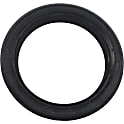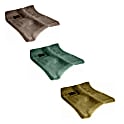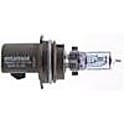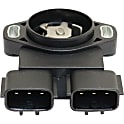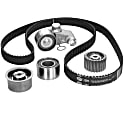{
"lazyNodes": false,
"abFitnotesFlag": false,
"abCrawlReviews": false,
"productOptionsCookie": false,
"orderDelayFlag": false,
"skipSessionCookie": false,
"covidMessage": false,
"fullTitleCookie": false,
"nrLoggerCookie": false,
"checkoutReviewCookie": false,
"productOptionSeqCookie": false,
"maintenanceFlag": false,
"bufferETACookie": false,
"multiShippingDiscountFlag": false,
"newFitmentFlag": false,
"surveyOptInFlag": false,
"crossSellFlag": false,
"skuMappingFlag": false,
"paySplitCookie": false,
"callDisableFlag": false,
"zipPaymentFlag": "u",
"hassleFreeReturn": false,
"lifetimeReplacement": false,
"cpn_off": false
}
Ford Contour Parts & Accessories
Find the right parts fasterSelect Your Vehicle Part
Top Rated Products
Popular Products
Product Questions & Answers
Shopping for Ford Contour Parts
My Contour's battery-shaped warning light is blinking on and off? What is it and what seems to be the problem?
The warning light that looks like a battery is called an alternator warning light. You might think that when it lights up, you're having a battery problem, however, it is not why the light comes on. The light is actually connected to your car's computer system that monitors the output coming from the alternator. If the output of the alternator is within the normal range, the warning light doesn't light up. But if the output is higher or lower than the pre-set limit, the warning light turns on. When the warning light is blinking, there is something wrong with your alternator. Alternators usually generate 13V to 14.5V. This voltage should be maintained at a constant level. As more power is demanded by the components that need it, the alternator needs to work harder in order for it to maintain the needed voltage. If your car's alternator is faulty, it will not be able to deliver the right amount of voltage needed by your car.
My Contour's engine's RPM kicks up to 3,000, but my car is not moving as fast as it sounds like and I'm having trouble shifting gears. Why is that?
The usual culprit is a dirty or defective clutch. If the problem is coming from the clutch, you should have it replaced with a new one. However, these symptoms may also be telling you that there's something wrong with your Contour's transmission. Your transmission may be slipping. One of the most common causes of transmission slip is low transmission fluid. This issue is easy to address as all you need to do is fill it up again with enough transmission fluid. Another common cause is a broken or worn out transmission band. This is a bigger problem because it poses a threat not only to your transmission but to your engine as well. If there are worn-out or defective parts like the transmission band, you need to have them replaced as soon as possible to avoid more expensive problems.
My Contour's check engine indicator is lit up. What's wrong with my car?
There are a number of reasons why your Contour's check engine indicator is on. It can be a simple problem and can also be a big one. One simple problem is your car's gas cap just needs to be tightened. The gas cap keeps the fuel system sealed and aids in maintaining the pressure in the fuel tank. Also, it prevents your gas from evaporating when you are not driving your car. If the gas cap is damaged or is missing, have it replaced. A lit up check engine indicator can also mean that your oxygen (O2) sensor is defective. A defective O2 sensor can cause low fuel economy of up to 40%. It can also mean that your catalytic converter is acting up. A faulty catalytic converter can also result in low fuel economy. Your Contour will not pass the emissions test as well.
One of the automaking giant's first "world cars," the Ford Contour was known for its superb handling and performance. It was an affordable car for those who took delight in the joys of driving. Many changes were made in its short, five-year production run, during which it has repeatedly garnered praise for its spirited drivability. Described as "a fun four-door sedan that offered European moves at American prices," it truly was a car for the world.
1995: A world car enters the scene
The Ford Contour was developed to compete with compact cars from Europe and Japan. Known as the Ford Mondeo abroad, it was a front-wheel drive sedan equipped with traction control and anti-lock brakes and powered by either a 2.0L Zetec inline four-cylinder engine or a powerful 2.5L double overhead camshaft (DOHC) Duratec V6 engine capable of 170 horsepower at 6250 rpm. It was a fun car to drive and landed on Car and Driver magazine's "Ten Best" list and named an Automobile Magazine "All-Star."
1996: Improved seating and driving experience
Although the Ford Contour handled well, it was criticized for having a cramped interior. Ford remedied the problem in the car's sophomore year by adjusting the front seats to provide more leg room for the rear-seat passengers. The rear seats were also remade in a way that allowed for more headroom. Finally, the manual transmission was reworked to make shifting easier.
1997: Minor tweaking
There were few changes for the Ford Contour in 1997. These include the introduction of a Sport Package for the GL and LX models for more serious driving and the addition of minor features like a power antenna and an interior trunk light.
1998: A facelift and the debut of the Contour SVT
The Ford Contour's exterior was restyled with a wider chrome grille and larger headlights. It also gets new alloy wheels and slightly more spacious rear seating. This year also saw the debut of the high-performance Ford Contour SVT, which was hailed for its superior handling. Its 2.5L Duratec 25 SVT V6 engine had a higher maximum output of 195 hp and 165 ft.-lbs. of torque.
1999: Added power and control
This year saw the Ford Contour reach the peak of its performance. The 2.0L Zetec I4 engine now produced an additional 5 hp while the SVT's maximum power peaked at a higher 200 hp. A new all-speed traction control system became available for V6 models with anti-lock brakes. This made more aggressive driving possible. The rear seat room was also increased for the third year in a row for better seating. The car's reputation for great drivability at an affordable price remained strong that year when Edmunds.com named the Contour SVT the "most wanted sedan under $25,000."
2000: Final production year
Other than the addition of more color options and a standard emergency trunk-release handle, only minor changes occurred this year. The last Ford Contour left the assembly line on October 19, 2000.











